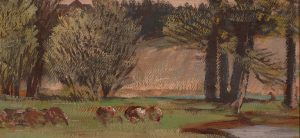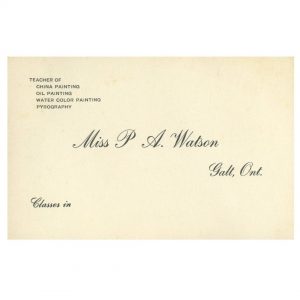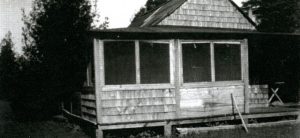In August of 1914, Great Britain declared war on Germany, ushering Canada, a member of the British Empire into the First World War. London requested 25,000 men for the first Canadian Contingent overseas but after a direct call to arms over 35,000 troops ended up at the hastily constructed camp in Valcartier, Quebec for training. Homer Watson traveled to Valcartier Camp in the fall of that year to make sketches. From these sketches Watson would complete three large commissions for the Canadian Government at the behest of the Minister of Militia and Defence, Sam Hughes. Hughes recounts their arrangement in a letter to the Deputy Minister of Militia and Defence dated May 30, 1916:
“When the troops had assembled at Valcartier in 1914, it was suggested by many notable persons in Canada, that a painting should be had of the historic Camp. Accordingly, Mr. Homer Watson, who spent several days there, painted three scenes; – one – a general one of the Camp; – another – showing one of the historic reviews, and a third, – showing the soldiers at target practice on the long range.”
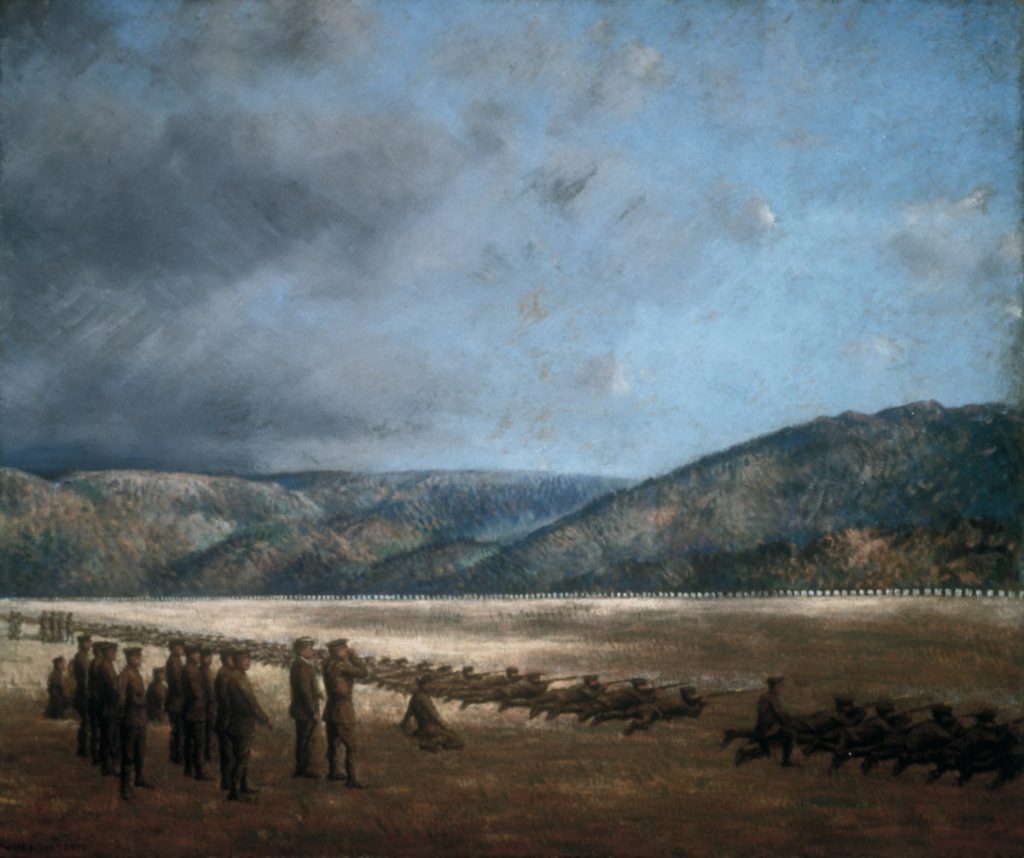
Due to a lack of communication and having taken on the commission without a prior written agreement it would take a number of years for the Government to officially purchase the three paintings and they would do so at a fraction of the price Watson had hoped for. Two of the three paintings, Camp at Sunrise and The Birth of an Army, currently reside at the Canadian War Museum. The third, The Review, was lost to a fire.
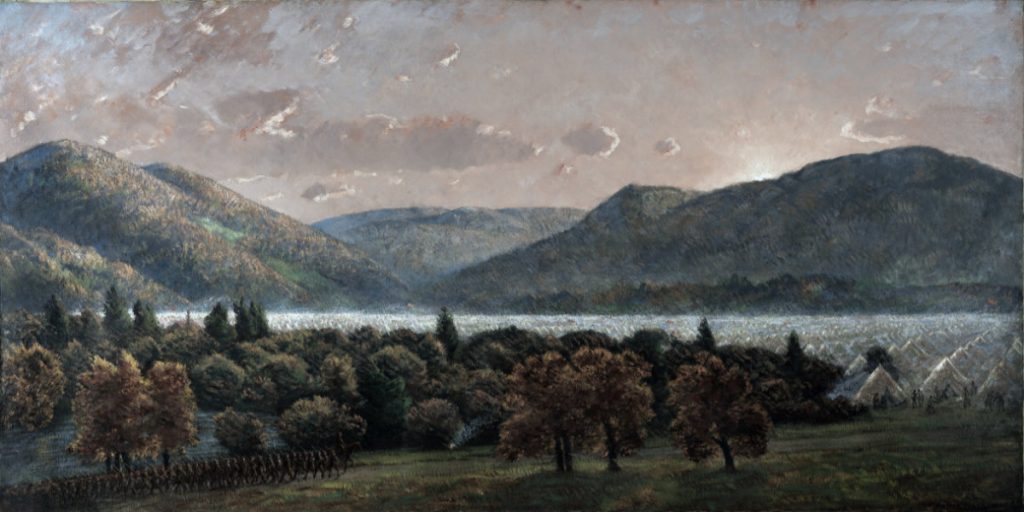
Prior to being sent to Ottawa the three large scale commissions went on display in first Doon and then Toronto. A news clipping from the time reports that over 1,500 visitors made the trip to Watson’s home to view them.
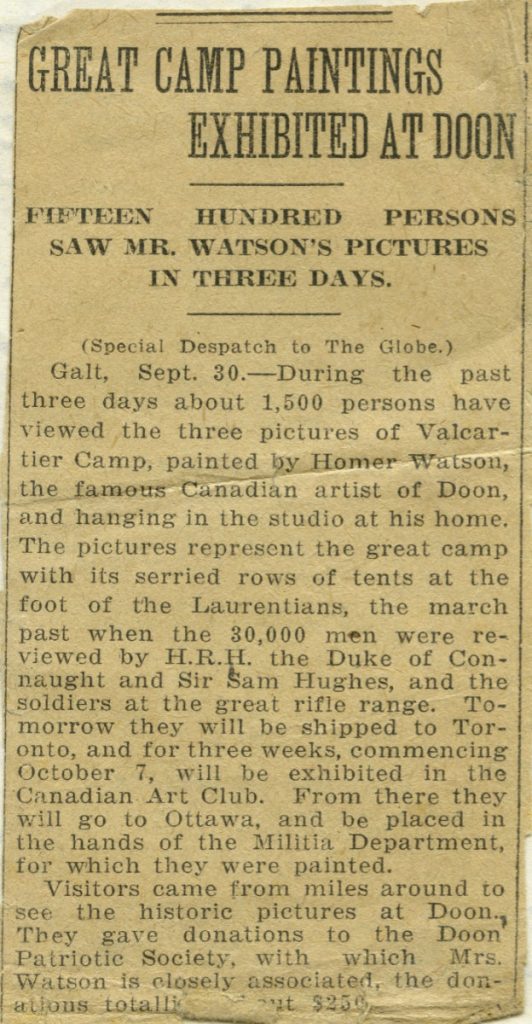
Today the Homer Watson House & Gallery owns one of the smaller scale studies Watson did of Valcartier Camp. Titled Valcartier Camp the painting resembles quite closely The Birth of an Army with both overlooking a sea of white tents and yellow sunlight peaking over the mountains in the distance. The piece is currently on display in the Watson Studio.
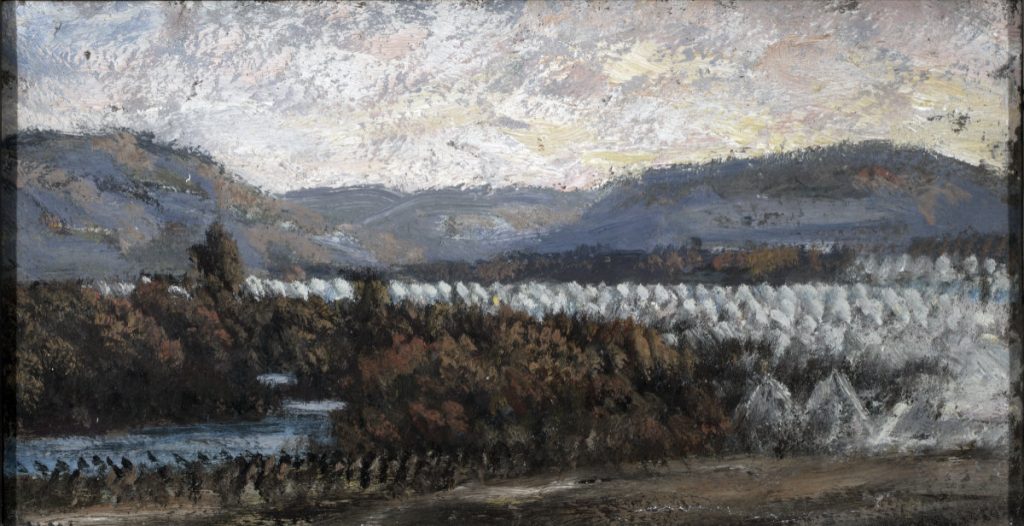
The second Homer Watson WWI painting the gallery has in the permanent collection was completed following the war circa 1918 and is titled Triumph of WWI. As Watson was not in Europe during the immediate aftermath of the War it is believed he used a photograph as reference as pictured below.
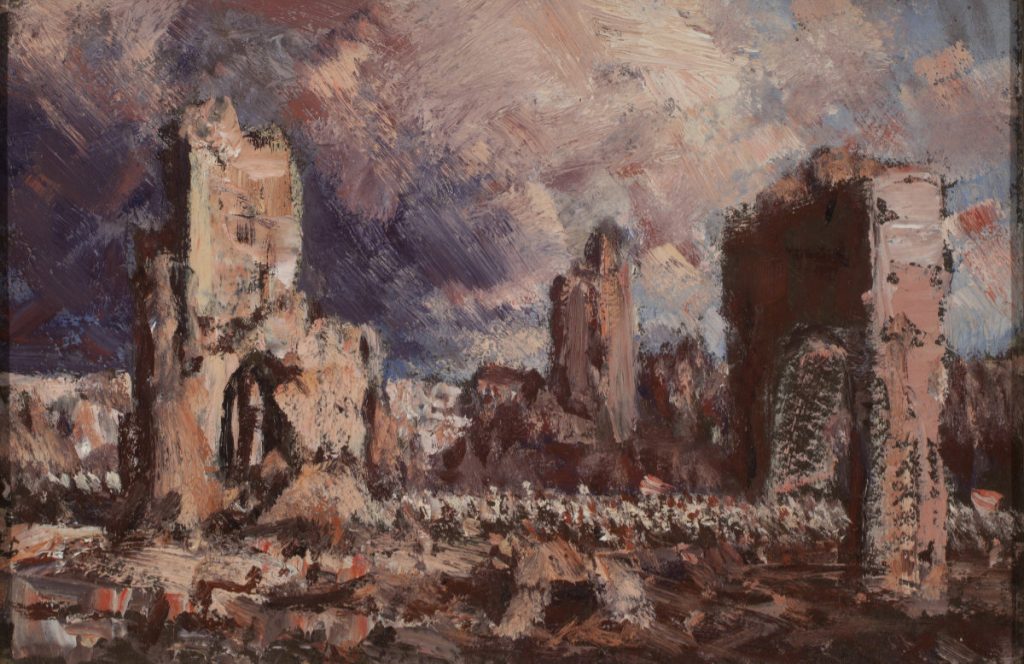

Homer Watson’s war paintings are a unique contribution to his artistic output. While he may not have been fighting on the European front, Watson’s paintings document an important moment in the Canadian Military’s mobilization efforts.


